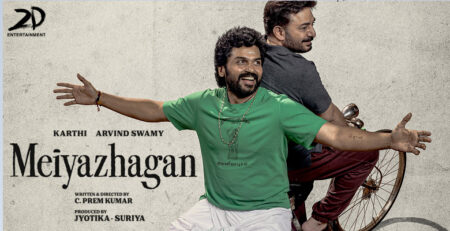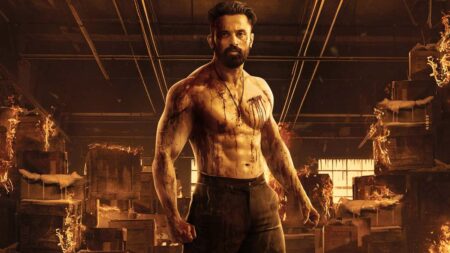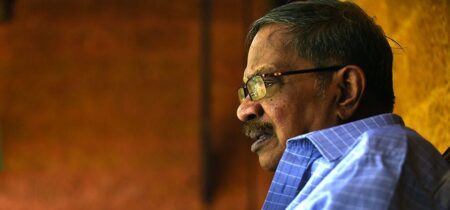1899, the new web series from the creators of German masterpiece Dark, has filmed entirely in a virtual studio. Here’s all you wanted to know about ‘Volume’ and why it matters to futuristic filmmaking.
Jantje Friese and Baran bo Odar, the creators of Netflix’s first German original and the mind-bending series Dark, are back with a new series: 1899. Netflix unveiled the first-look poster of the mystery series a few days ago. The OTT giant streamed the show in November 2022. The series follows a group of immigrants travelling by ship from Europe to New York at the turn of the century starring actors such as Aneurin Barnard, Andreas Pietschmann, Miguel Bernardeau and Emily Beecham.
What’s the catch?
The show has shot on a virtual production stage with advanced LED-volume technology at Studio Babelsberg in Germany. The brand new, state of the art ‘virtual production’ facility is called Volume. The entire show had been filmed at Volume, which is owned by Dark Bay (an arm of Friese and Odar’s production company Dark Ways) with the backing of Netflix. The stage is 75-ft wide and 23-ft tall. It has a shooting space of 4,500 sq ft, surrounded by an LED backdrop which allows the background to be manipulated in real-time.
Has it been done before?
Well, real-time the virtual set is a fairly new phenomenon in computer graphics. Still, it holds the potential to have impressive applications in the film and television industry. This avant-garde approach of film-making was put to the test on Disney’s The Mandalorian. More than a half of the film was filmed indoors on a virtual set.
ILM (Industrial Light and Magic, a visual effect motion picture company) worked with Epic Games on this project, using “game engine, real-time render, and video wall technology”. They beamed the background in a 360-degree virtual set. They called this cutting-edge technology “StageCraft”. The makers say this is the most groundbreaking innovation that has happened in filmmaking since the invention of the blue and green screen and will prove to be very important to the future of film and television.
What is it and how does it work?
A virtual set allows the user to alter the setting and background with digital graphics. Quite literally, the sky’s the limit here. A virtual set can place the people in video inside a coffee shop, a war zone and even in outer space, playing chess on the barren lands of Mars.
By using Unreal Engine, a tech from the video game industry, the creators can make a real 3D background move with the camera’s range of view, allowing the filmmakers to execute the conventional cinematography within the virtually realistic sets. Released in May 1998, Unreal Engine is a free-to-use game development engine owned by Epic Games. It can create a large variety of 3D, 2D and VR (Virtual Reality) game styles. The platform is known for its impressive graphical and lighting capabilities. It also includes a library of materials, objects and characters.
Benefits of virtual studio set-up
The creators of 1899 say that they had originally planned to travel to “Spain, Poland, Scotland, all kinds of locations” for the shooting of the series. But due to the Covid-19 pandemic, they knew this might not be possible in the near future; so they “fully embraced the idea of bringing Europe” to them. The virtual studio will make filmmakers think of stories differently, say the creators of 1899. “Once you start working with it, it makes you write scenes differently; it allows you to explore things you might not be able to explore on a natural set”.
The key benefits of the virtual studio can be summarised thus:
Cost: The technology is cost-effective and saves creators from spending hefty amounts on location. It also adds up to the effectivity by eliminating discontinuity, thanks to the controlled environment. In outdoor locations, factors such as rain or weather changes can affect shooting, costing extra money.
Creativity: Now, creators can imagine without the limitation of the ‘physical’. The scope of exploration can go beyond human imagination and this can easily create hitherto unseen environments.
Safety: The world is in the middle of a pandemic and since virtual productions require a thin crew and are conducted in controlled environments, it’s a much safer way to shoot.
Also, virtual studios could offer a real alternative to green screen special effects. LED walls make the lighting better and filming smoother. Interestingly, the year 2020 and the pandemic have propelled humanity into new ways of creating and living. Creative professionals are finding new ways to boost productivity and improve distribution. The OTT boom is helping creators produce top-quality content at significantly lower prices. The push to develop increasingly accessible and affordable hardware and software is democratising how content is created and consumed.
Content captured in ultra-high resolutions (4K and above) in HDR is supported by the streaming services and becomes consumable at home — or on mobile devices. For instance, David Fincher’s Mank was shot in 8K in HDR. The evolution to 5G is expected to dramatically increase transfer speeds, allowing large files to be easily moved into the cloud for immediate and accurate viewing or editing.
It’s in this context the concept of virtual studios should be placed. Virtual sets, along with other technological advancements, can help the filmmaking industry become sustainable in the future. It also promises an era where the tools for creating a good piece of cinema is accessible to almost everyone in a cost-effective way.




